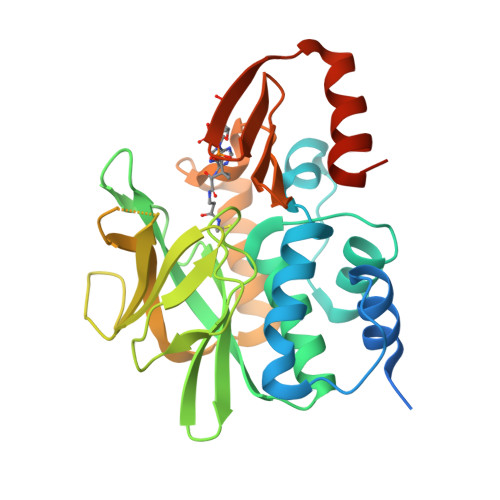The Bacillus anthracis arylamine N-acetyltransferase ((BACAN)NAT1) that inactivates sulfamethoxazole, reveals unusual structural features compared with the other NAT isoenzymes.
Pluvinage, B., Li de la Sierra-Gallay, I., Kubiak, X., Xu, X., Dairou, J., Dupret, J.M., Rodrigues-Lima, F.(2011) FEBS Lett 585: 3947-3952
- PubMed: 22062153
- DOI: https://doi.org/10.1016/j.febslet.2011.10.041
- Primary Citation of Related Structures:
3LNB - PubMed Abstract:
Arylamine N-acetyltransferases (NATs) are xenobiotic-metabolizing enzymes that biotransform arylamine drugs. The Bacillus anthracis (BACAN)NAT1 enzyme affords increased resistance to the antibiotic sulfamethoxazole through its acetylation. We report the structure of (BACAN)NAT1. Unexpectedly, endogenous coenzymeA was present in the active site. The structure suggests that, contrary to the other prokaryotic NATs, (BACAN)NAT1 possesses a 14-residue insertion equivalent to the "mammalian insertion", a structural feature considered unique to mammalian NATs. Moreover, (BACAN)NAT1 structure shows marked differences in the mode of binding and location of coenzymeA when compared to the other NATs. This suggests that the mechanisms of cofactor recognition by NATs is more diverse than expected and supports the cofactor-binding site as being a unique subsite to target in drug design against bacterial NATs.
Organizational Affiliation:
Université Paris Diderot, Sorbonne Paris Cité, Unité BFA, EAC-CNRS 4413, Paris, France.




















